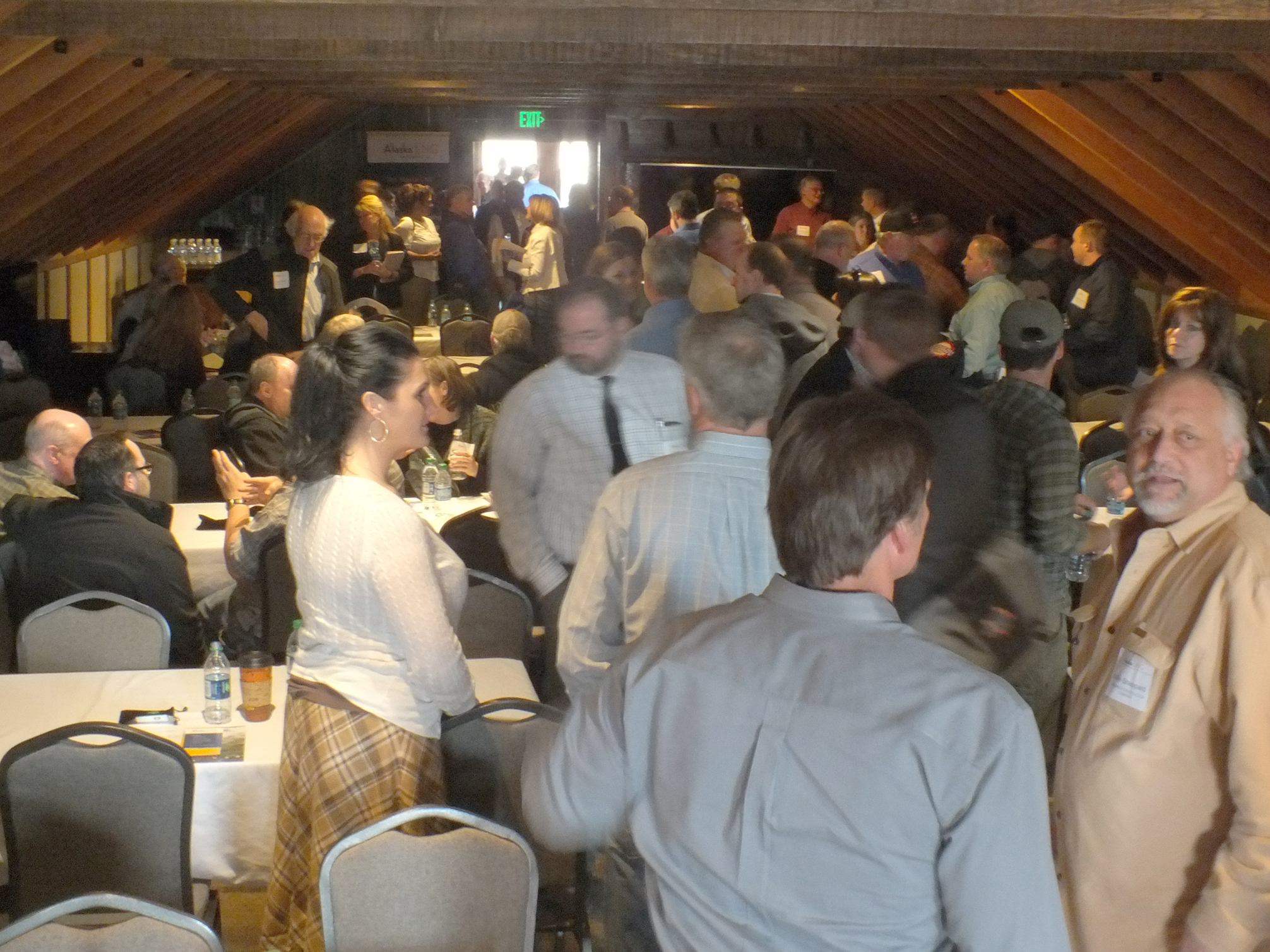Although few specifics of the Alaska Liquid Natural Gas Project’s contracting procedures have been worked out, Alaska LNG contracting engineer Dan DeVries felt confident telling a diverse gathering of Kenai Peninsula contractors, service-providers and business owners that “for this project, we (Alaska LNG) will need basically everything.”
On April 29, DeVries spoke to 146 registered guests at the Cannery Lodge in Kenai during the Alaska LNG’s information session for businesses interested in working on the project of building more than 800 miles of pipeline from northern Alaska gas fields to a liquefaction and storage facility to be constructed in Nikiski.
LNG external affairs manager Kim Fox said that the number of contracted jobs Alaska LNG might seek and its budget for those jobs were “impossible to say right now” because neither the contracting strategy nor the exact engineering of the estimated $45-$65 billion project have been determined.
However, Alaska LNG was able to present attendees with a long list of general needs, including construction and administrative services, environmental consultation, material supply, aviation, land, and marine transport, medical services, snow removal, pest control, and cleaning, catering, garbage disposal, and maintenance services for the work camps the project is anticipated to require.
During his presentation, DeVries said that the majority of the work will be subcontracted by competitive bidding through a group of prime contractors who have yet to be hired. He said Alaska LNG will prioritize local hiring because local businesses have experience working under Alaska environmental conditions, and that contractors and subcontractors will be held to environmental, safety, quality and cost standards that have not yet been finalized.
Many of the project’s contracting decisions will be made following a logistics study by PRL Logistics, which was represented at the information session by its external affairs director Dianne Blumer and by president and Cannery Lodge owner Ron Hyde.
Hyde said that the local logistical needs of the Alaska LNG project will go beyond the construction of the pipeline and liquefaction plant.
“The project is currently developing their estimate of demand,” Hyde said. “And what we’re finding is that tremendous infrastructure will have to be built. Additional roads, additional improvements to port facilities, tons of man-camp type locations. The socioeconomic impact to the workforce is going to be massive… for transportation and logistics, there’s going to be huge, huge opportunities.”
Although speakers at the session emphasized the importance of hiring local businesses, many expect the massive demands of the project to exceed locally available labor supply. Rebecca Logan, general manager of the state-wide trade association Alaska Support Industry Alliance, said that although outside workers will likely be brought in, doing so would not necessarily displace qualified Alaskan workers.
“Every Alaskan who wants to work on this project who is capable will have the opportunity,” Logan said. “It’s going to be one of the largest projects not only in Alaska, but in North America. And when you talk about the workforce we have… we will never be able to meet the complete need. But our goal is to help every Alaskan company and worker who wants to work on that project be able to work on that project.”
Logan estimated that the majority of conference attendees were Alliance members. She said that although the Alliance will not participate directly in the contracting process, preparing for the possibility of LNG contracts could become a focus of its educational sessions for members.
“I could envision us getting us into some technical training to help some of these small contractors prepare for that,” Logan said. “Maybe looking at some of the bigger LNG projects in the U.S. that have been completed, and what those areas have done to help their smaller local contacts participate.”
At least one representative of local government also attended the session. Larry Persily, an assistant to Kenai Borough Mayor Mike Navarre hired to serve as the borough’s liaison with the LNG project, said that although none of the information presented was new to him, he attended in order “to get a sense of the questions from the community.”
Persily, who also attended a previous information session in Anchorage, said that ensuring local hiring was a concern he had heard voiced in both places. When asked if the Kenai Peninsula Borough is able to do anything to encourage local hire, Persily said, “We’ll keep reminding them so they don’t forget.”
“Certainly Alaska’s not going to be able to fill every job on this project,” Persily said. “So it’s a matter of working on job training so you fill as many as possible, but also accepting that some are not going to be filled with Alaskans, and there the borough wants to make sure that if they have to bring in temporary workers the impact on services is manageable. If you talk about work camps, and highway traffic, it’s going to be more of an impact if you have to bring in a lot of workers than if you use people who live here. So we’ll be tracking all of them and sticking our nose in as best we can.”
Although the contracting process has yet to begin, interested businesses are presently able to add their names to a list on Alaska LNG’s website.
Fox said that prior to the information sessions, which in addition to the Kenai meeting in Kenai include sessions in Anchorage, Fairbanks and Barrow, approximately 150 businesses had done so.
Ben Boettger is a reporter for the Peninsula Clarion.




